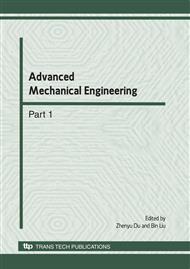p.1151
p.1155
p.1159
p.1163
p.1168
p.1172
p.1177
p.1184
p.1190
Finite Element Analysis of Behavior of Bolted Flange Connections under Bending Loading
Abstract:
Only a limited number of experimental and analysis reports exist concerning bolted flange connections under bending loading. In order to investigate the complex nonlinear phenomena, three dimensional elasto-plastic finite element analyses are performed. In those analyses, frictional contact model with small sliding option is applied between contacting pair surfaces of all connecting elements. Bolt pretension force is introduced in the initial step of analysis. From this study, the following results are obtainted:1) proposed finite element analysis method can be applicable to estimate complex nonlinear behavior of bolted flange type connections; 2) There is a sharp change in bending stiffness during loading, and lateral slip between two jointed flanges cause the bolt to carry shear load. The design of bolted joints should consider the interaction among cylinders, flanges and bolts.
Info:
Periodical:
Pages:
1168-1171
Citation:
Online since:
June 2010
Keywords:
Price:
Сopyright:
© 2010 Trans Tech Publications Ltd. All Rights Reserved
Share:
Citation:


